

Spruce Tree House
Mesa Verde National Park

Spruce Tree House as viewed from the Mesa
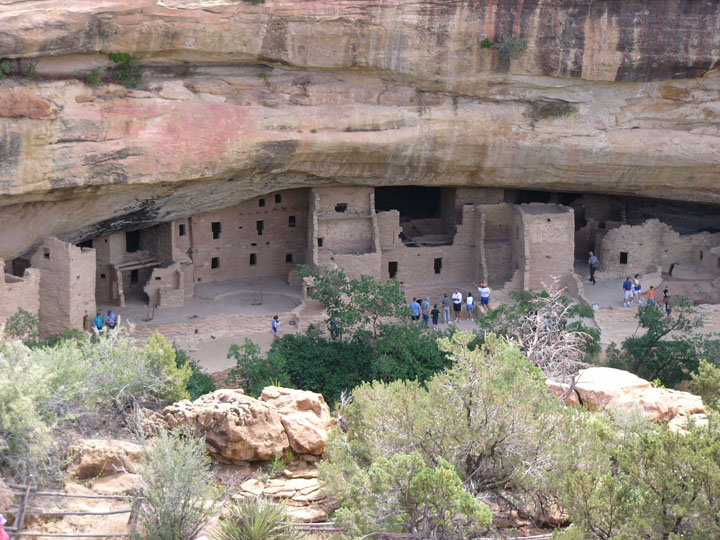
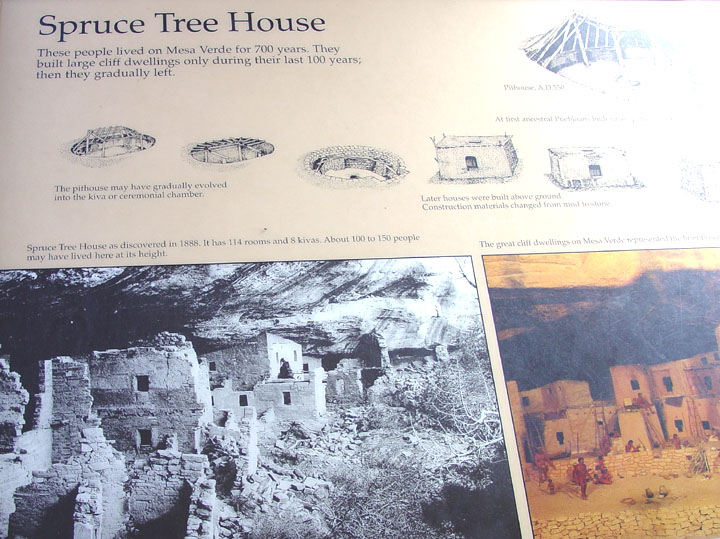
Spruce tree House, the third largest cliff dwelling among several hundred within park boundaries (Cliff Palace and Long House are larger), was constructed between A.D. 1200 and 1276 by the Anasazi. The dwelling contains about 114 rooms and eight kivas (kee-vahs), or ceremonial chambers, built into a natural cave measuring 216 feet (66 meters) at greatest width and 89 feet (27 meters) at its greatest depth. It is thought to have been home for about 100 people.
.
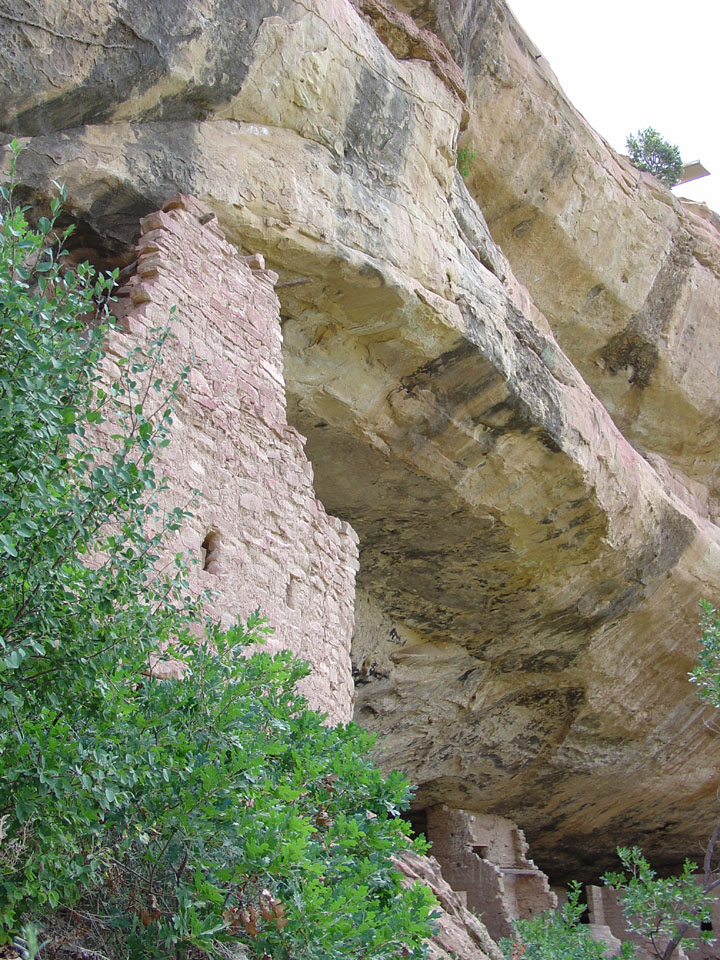
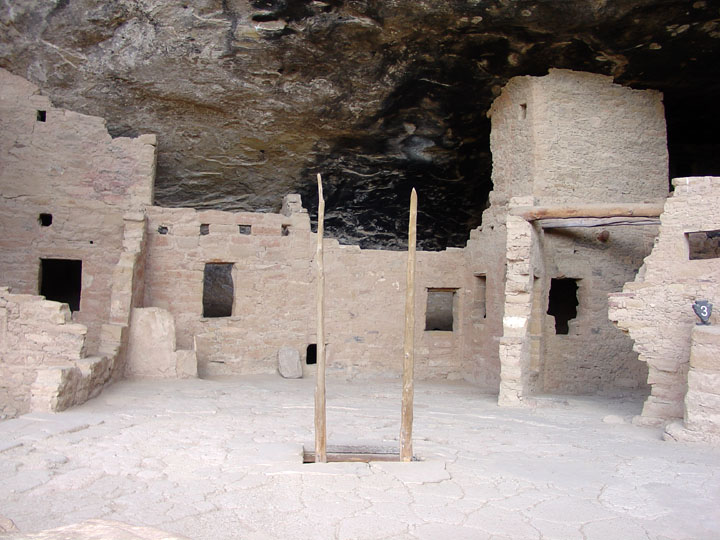
ladder to descend into the Kiva
much of the family activity was in the open courtyard
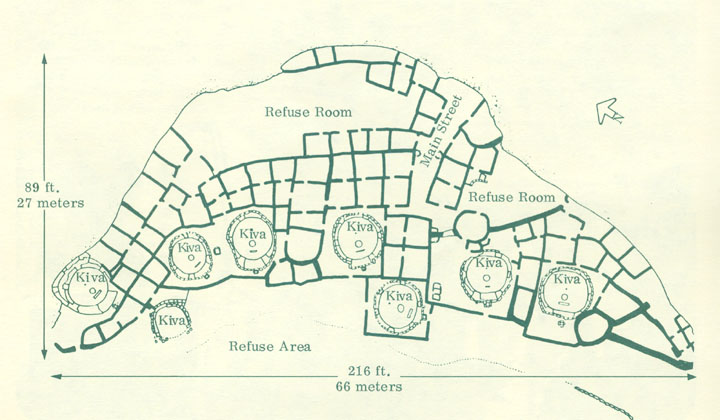
the layout of Spruce Tree House
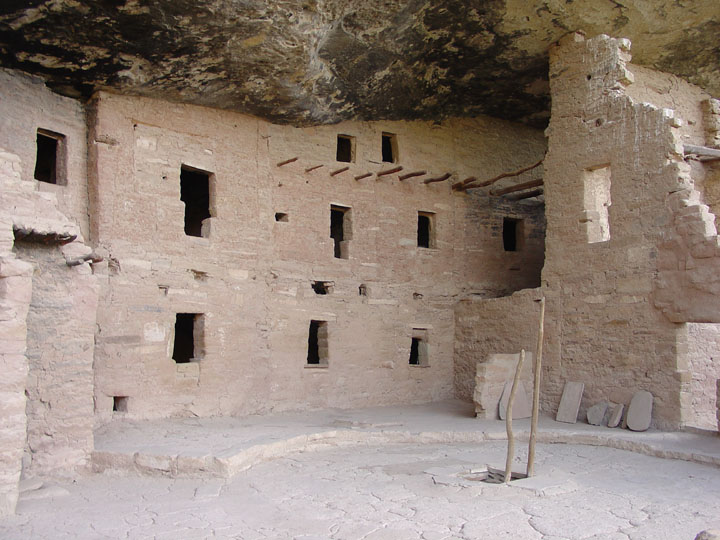
the three story wall has openings for about 20 rooms, each 6' by 8" in size
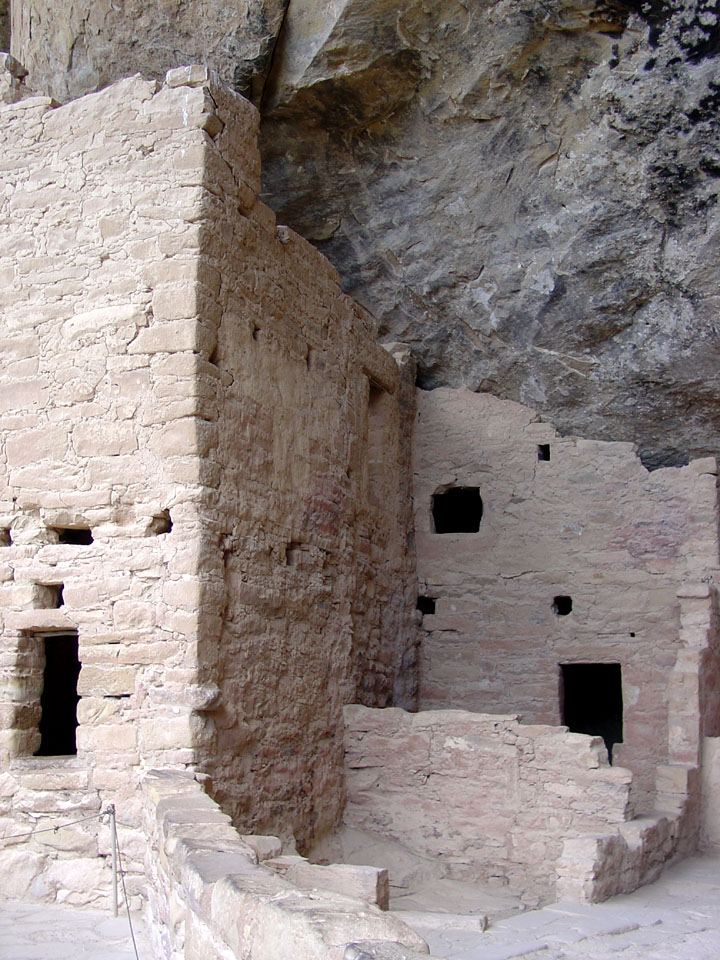
Spruce tree House was opened for visitation following excavation by Dr. Jesse Walter Fewkes of the Smithsonian Institution. Dr. Fewkes removed the debris of fallen walls and roofs and stabilized the walls approximately as you see them now. Due to the protection of the overhanging cliff, Spruce tree House had deteriorated very little through the years and has required little supportive maintenance.
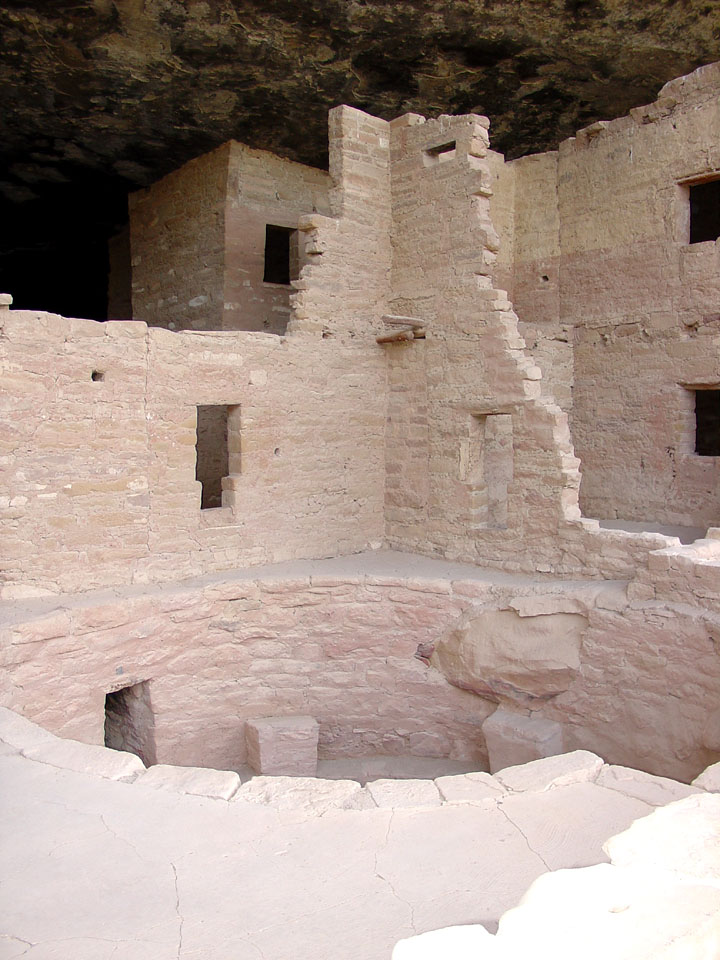
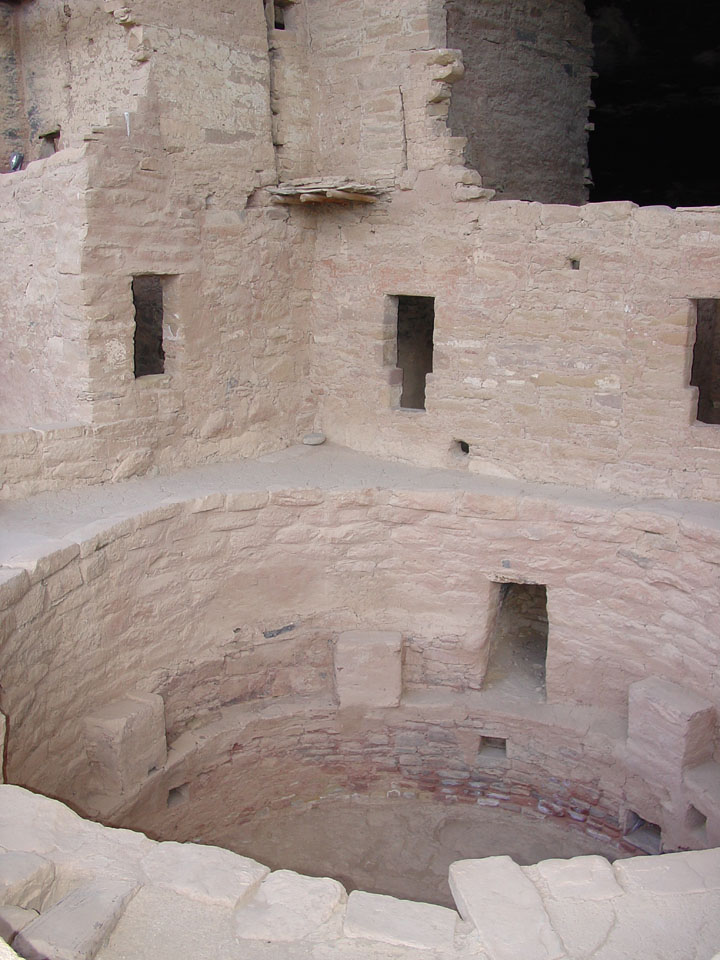
the kiva
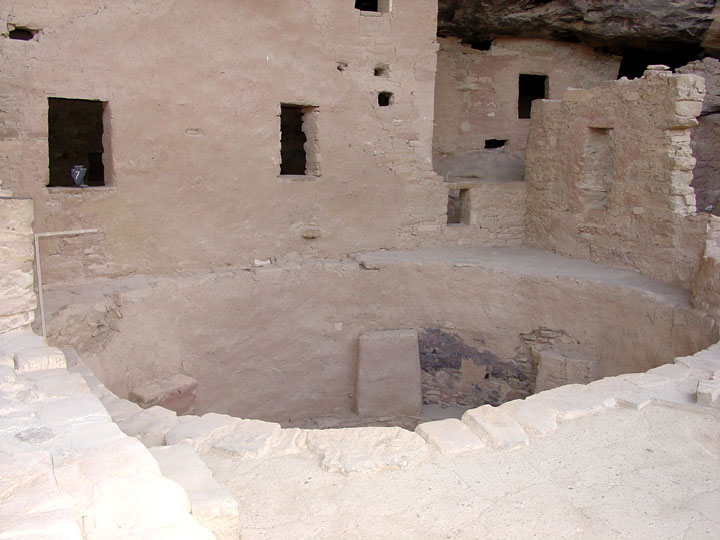
When you take a close look at Spruce tree House, you can see that very little restoration has been done on the dwelling. About 90% of Spruce thee House is original and still intact. No attempt was made to reconstruct areas which were already in ruin when archaeologists first excavated and stabilized here. It is National Park Service policy to remortar gaps in the wall and do minor repair work on a regular basis to prevent deterioration but not to reconstruct the dwelling itself. The wall behind this kiva is one of the few places in Spruce tree House where some reconstruction was necessary. Notice the jagged tracing that formed an arc along the wall. The entire center section of this wall collapsed into the kiva sometime after the Anasazi left the area. In an effort to prevent the upper portion and sides from also falling, archaeologists reconstructed the walls as they thought it originally looked. The same techniques have been used throughout Mesa Verde, and sometimes it takes close observation to tell the difference between Anasazi work and our modern day repairs.
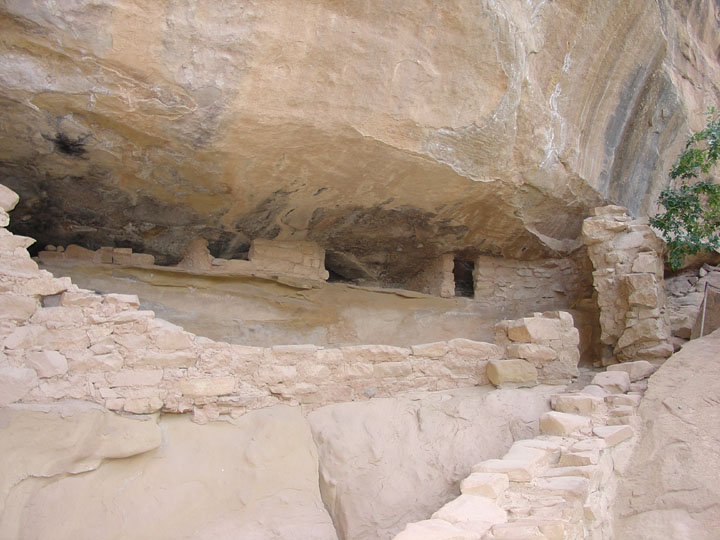
small storage rooms created in a overhead rock opening
Along the top of the wall to the right of the kiva is a series of stones which seem to be randomly placed there. At first glance you might think that this was done recently, yet these stones represent a dry wall constructed by the Anasazi. Whether a mortared wall collapsed and the stones were stacked as temporary repair work or if the wall was built deliberately in this fashion, we will never know. The fact is that the stones have remained in this condition for hundreds of years and have not required stabilization to this day. At the far right end of the dwelling are two small rooms nestled against the face of the cliff. These are storage rooms where the Anasazi placed corn, beans, squash or other food after it was harvested and dried. The rooms were sealed shut with a sandstone slab to prevent rats and mice from invading the food supplies. Rooms such as these are typical in all cliff dwellings. As you came down the trail, you may have noticed other small rooms high in the cliff face near the spring area. These were also storage rooms associated with Spruce tree House. Imagine how important it must have been for the Anasazi to store up enough food to last them during the long, cold winter months.
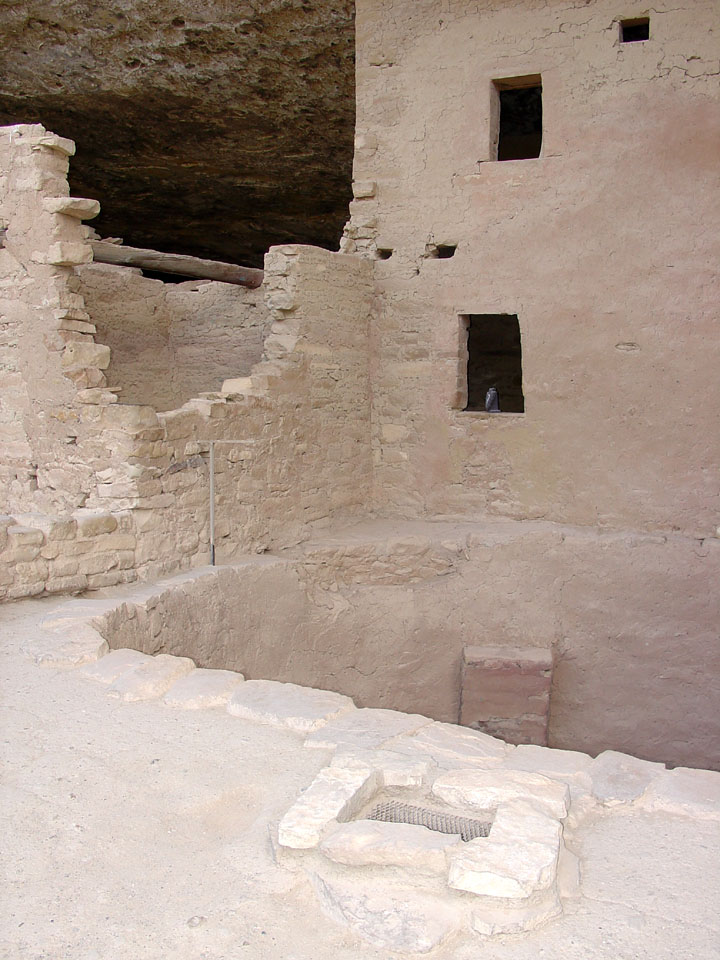
in the foreground is the ventilator shaft for the Kiva
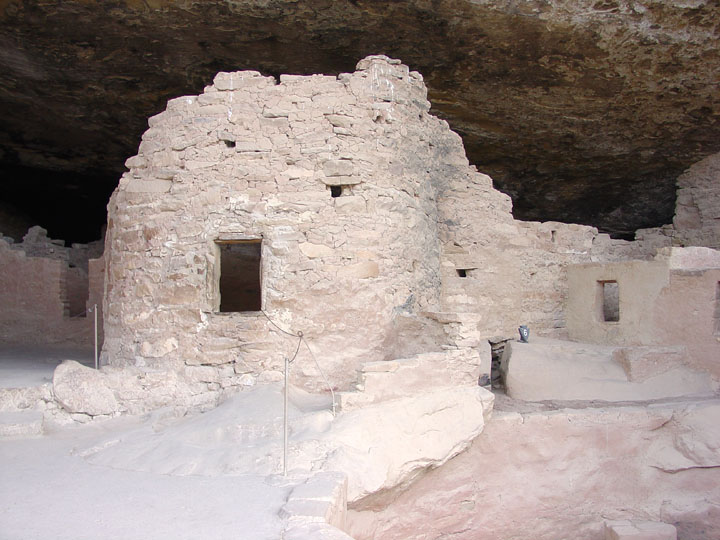

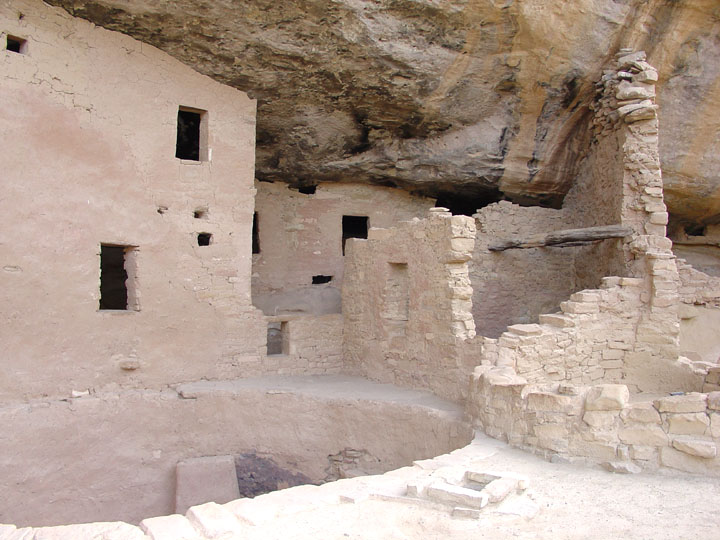
The cliff dwelling was first reported in 1888, when two local ranchers chanced upon it while searching for stray cattle. A large tree, which they identified as a Douglas spruce, was found growing from the front of the dwelling to the mesa top. It is said that the men first entered the ruin by climbing down this tree, which was later cut down by another early explorer.
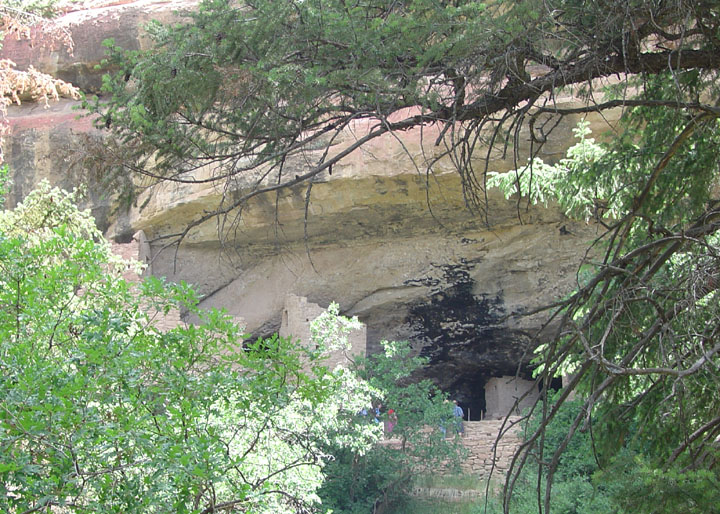
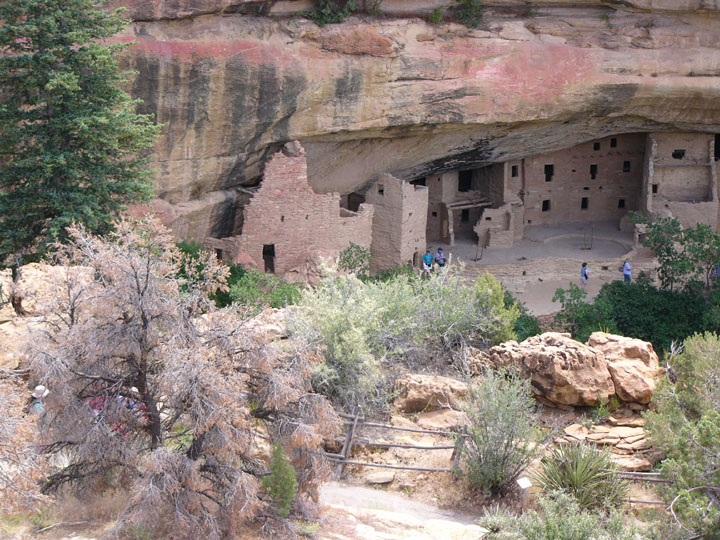
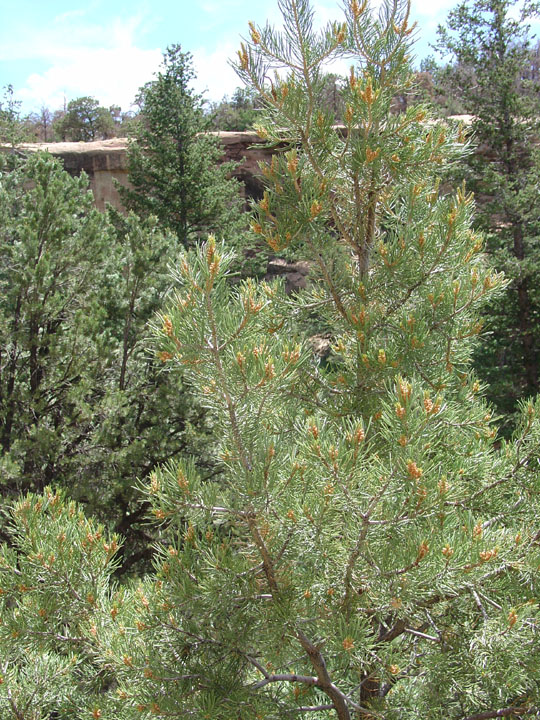
the Pinyon pine
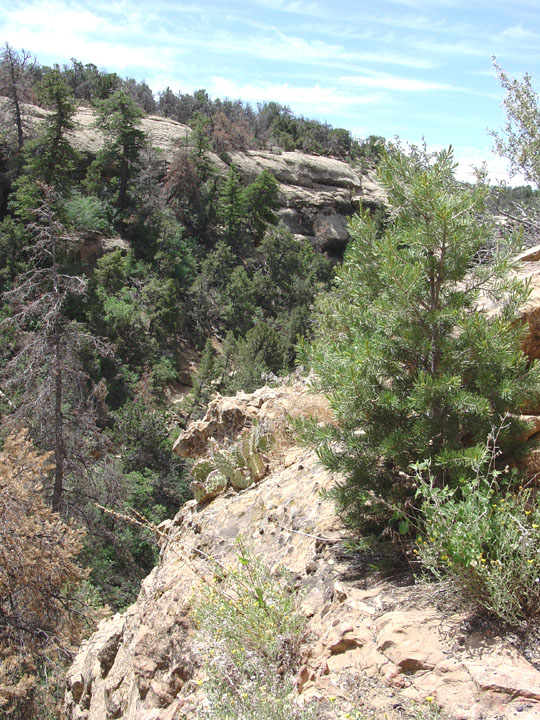
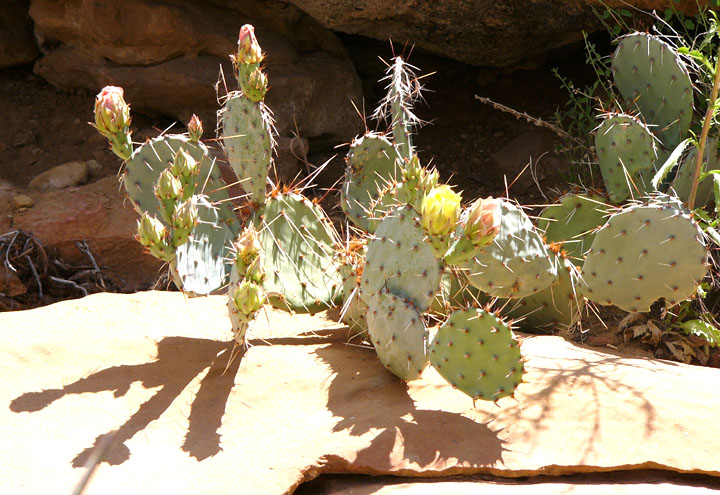
prickly pear cactus in bloom
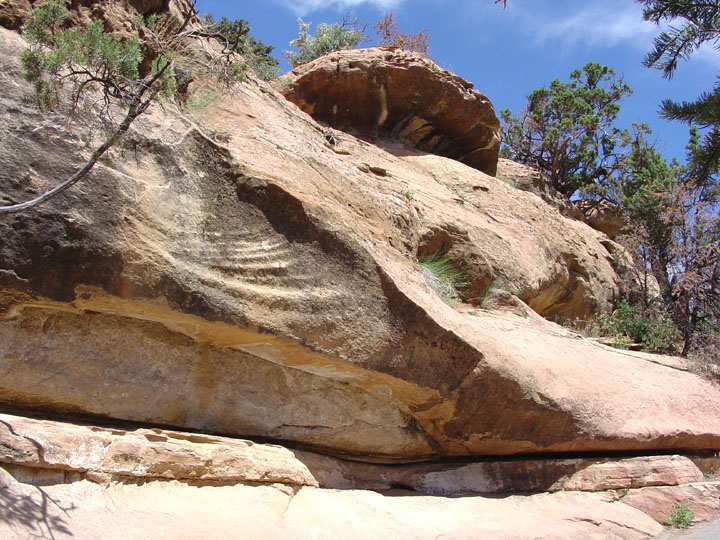
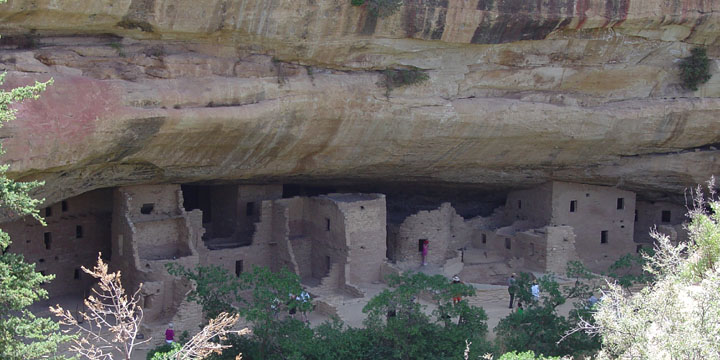
last look at Spruce Tree House